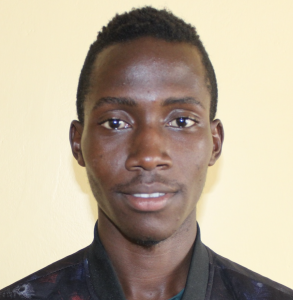The Luyeshe community is located in the deep rural areas of Malava sub-county. The area is mostly covered in green, as evidenced by the tree coverage and the large sugarcane and maize plantations. The area is generally flat with gradual slopes sinking to streams that criss-cross the land. Luyeshe Village is made of a group of people that are closely knit. This is evidenced by how the community members construct their homesteads; they build the close to each other and are located close to the access road on the same end of their farms.
240 people here depend on unprotected Khausi Spring for all of their daily water needs. Walking to the spring, I met several women laughing and really having a good time catching up with each other. Upon inquiry, Sir John Kukali Khausi, the spring's landowner, let me know that here is where information gets spread as this spring's location is a shortcut to other households and acts as a central point in this community. Whenever they meet, some information will be passed to the other guaranteed even if it is two people.
I would not drink the water coming directly from the spring as it is clearly dirty. The spring boasts of more leaves and bird droppings than the ground beside it. The spring also has many users who pose a risk in transmitting diseases as they dip their containers - and sometimes their hands and feet accidentally - into the water.
Most people have hectic daily schedules, limiting their time to fetch water, yet the task must be prioritized. However, most of the time, there are large crowds at the spring since everyone needs water to go about their day. This dictates that the earlier someone arrives at the spring, the less time they spend there. This forces some women to be up as early as 4:00 am to try to get to the spring first before others have fetched water, which increasingly churns up the mud and rotting debris from the bottom. Otherwise, time lost at the spring means less time for the rest of their work and activities throughout the day.
"The people that use this water point are many. There are times one can come here and stay for hours, making you do away with some of the day's duties. One is forced to come here with many jerrYcans to avoid coming back again, which is often very tiresome and difficult," explained teenager Sharon.
The reported health consequences of drinking water from Khausi Spring include typhoid and stomach upsets. Apart from bad health, community members also spoke of the financial strain of medicine and hospital visits for these illnesses.
"We depend on the sun to disinfect this water for drinking, which usually takes a lot of time and requires watching. Sometimes that doesn't work, and we end up having very bad illnesses, spend too much money treating them, and end up missing our daily activities," said Mr. Khausi.
When people fall ill after drinking the spring water, adults miss out on even more productive time while children have to stay home from school, falling behind in their lessons.
What We Can Do:
Spring Protection
Protecting the spring will help provide access to cleaner and safer water and reduce the time people have to spend to fetch it. Construction will keep surface runoff and other contaminants out of the water. With the community’s high involvement in the process, there should be a good sense of responsibility and ownership for the new clean water source.
Fetching water is a task predominantly carried out by women and young girls. Therefore, protecting the spring and offering training and support will help empower the female members of the community by freeing up more of their time and energy to engage and invest in income-generating activities and their education.
Training on Health, Hygiene, COVID-19, and More
To hold training during the pandemic, we work closely with both community leaders and the local government to approve small groups to attend training. We ask community leaders to invite a select yet representative group of people to attend training, which will then act as ambassadors to the rest of the community to share what they learn. We also communicate our expectations of physical distancing and wearing masks for all who choose to attend.
The training will focus on improved hygiene, health, and sanitation habits in this community. We will also have a dedicated session on COVID-19 symptoms, transmission routes, and prevention best practices.
With the community’s input, we will identify key leverage points to alter their practices at the personal, household, and community levels to affect change. This training will help to ensure participants have the knowledge they need about healthy practices and their importance to make the most of their water point as soon as the water is flowing.
Our team of facilitators will use a variety of methods to train community members. Some of these methods include participatory hygiene and sanitation transformation, asset-based community development, group discussions, handouts, and demonstrations at the spring.
One of the most important issues we plan to cover is handling, storing, and treating water. Having a clean water source will be extremely helpful, but it is useless if water gets contaminated by the time it is consumed. The community and we strongly believe that all of these components will work together to improve living standards here, which will help to unlock the potential for these community members to live better, healthier lives.
We will then conduct a small series of follow-up training before transitioning to our regularly scheduled support visits throughout the year.
Training will result in the formation of a water user committee, elected by their peers, that will oversee the spring's operations and maintenance. The committee will enforce proper behavior around the spring and delegate tasks that will help preserve the site, such as building a fence and digging proper drainage channels. The fence will keep out destructive animals and unwanted waste, and the drainage will keep the area’s mosquito population at a minimum.

 Protected Spring
Protected Spring
 Rehabilitation Project
Rehabilitation Project














































